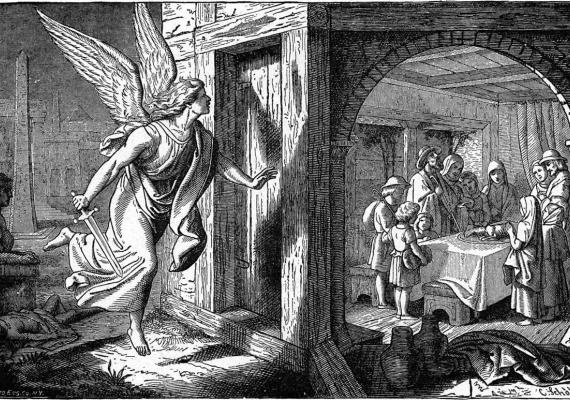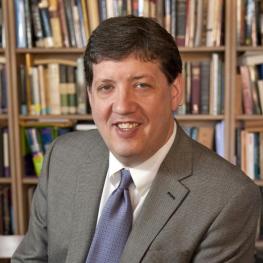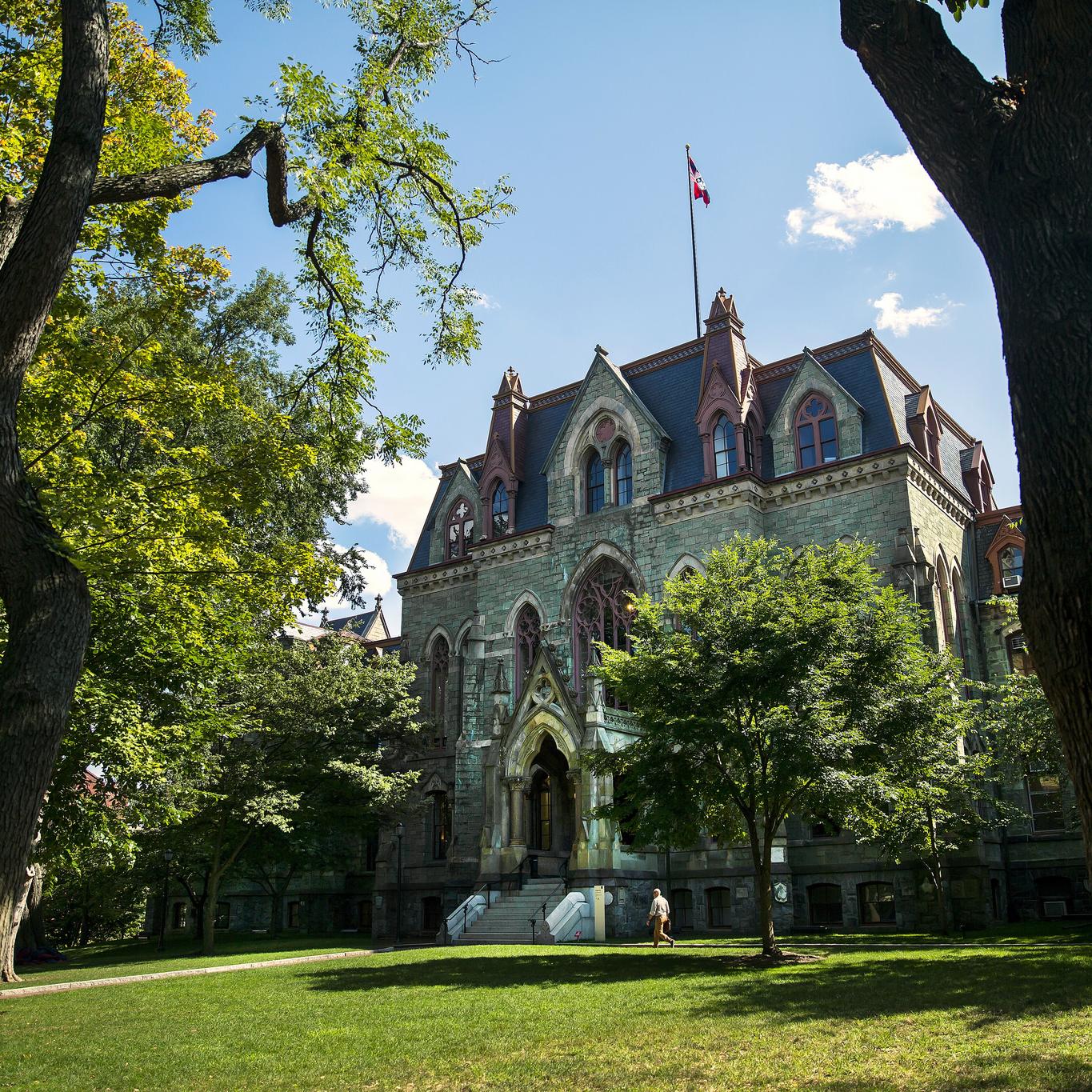Jewish Studies and the Arts of Resilience in the Coronavirus Era
The actions of ancient Jews as a model for cultural resilience, simulating presence, and maintaining optimism.

In fifteen years serving as an academic director, I have never experienced such a cascade of painful decisions as I have faced in the last few weeks, scuttling programs and plans that were years in the making, disappointing people, calling a halt to scholarly work that it is my responsibility to help advance. Of course, the disruption that the Katz Center faces is nothing compared to what so many are going through at Penn, in Philadelphia, and around the world right now. But at the same time, I have to acknowledge the loss in seeing our building empty out, cancelling our year-end conference, turning away students from our summer school, seeing our library closed despite the defiant efforts of its staff, and knowing the anxiety being felt by so many of our fellows, present and former.
In my imagination, the ultimate hero is Yohanan ben Zakkai, the fabled rabbinic sage trapped in the Roman siege of Jerusalem who by dint of his cleverness managed to escape and keep his academy going in the wake of the city’s destruction in the 1st century CE. The Katz Center will survive this crisis as it has earlier challenges like an arson perpetrated against its predecessor institution Dropsie college. But right now, we are all still under siege.
There is little in my personal experience that I can draw on in figuring out how to move forward from here, and especially when things are still so uncertain, but the study of Jewish history offers inspiration. After all, Jews in earlier eras have faced more than their fair share of crises and catastrophes, including annihilative perils that threatened their very existence as a people. I would leave out of this discussion the Holocaust which consumed too many people to treat as a case study in survival—to paraphrase Primo Levi, there the path to destruction was broad while the paths to salvation were always improbable. But Jewish history offers many other examples of survival, some grounded in experience, others imagined, of escape from dire circumstances, of salvage, of being able to start over in new contexts.
This was something that I investigated in a study I undertook much earlier in my career, published as a monograph called Surviving Sacrilege. I am a scholar of the ancient world, and much of what I study is very remote chronologically and not directly connected to the present, but in truth, the questions I bring to that period are always shaped by what is happening today. When writing that book, in the years immediately following 9/11, I was especially influenced by the feelings of vulnerability and perishability that terrible event imposed on the country.
Nothing in America at the time was more ambitious or more monumental than the World Trade Center, and yet its towers only survived for 28 years. The Jerusalem Temple was also destroyed in the end, but ancient Jews sustained its cult for a thousand years, protecting it against various foes, adapting it when they had to, and restoring it when it was physically destroyed. I wondered how they managed to pull off such a remarkable feat of cultural preservation given how disruptive reality tends to be and given the rapacity and brute power of the kinds of enemies they faced. I was not familiar with the concept of resilience at the time that I was writing the book—a kind of cognitive skill set that gets a lot of attention at Penn in particular these days, but had not yet fully come into focus at the beginning of the century. Penn itself is now home to a “Resilience” program that aims to understand and instill the skills needed to increase an individual’s ability to overcome adversity and thrive in life. I have realized in retrospect that something like that at a collective level was what I was trying to understand 15 years ago, when I thought there would be something to learn about the resilience of Jewish culture by studying how ancient Jews managed to preserve their traditions in the face of very adverse circumstances that included violent intrusions and other threats posed by foreign rulers.
For readers unfamiliar with ancient Jewish history, I should note that it is not easy to draw clear-cut historical conclusions about what happened then. We do not have many texts from the period, and those that have made into the present are of questionable historical reliability, coming from unknown authors and often containing patently fictionalized elements.
But even so, we can learn something about the mindset of their authors from the kinds of stories that they chose to tell, and it is clear that such authors thought a lot about the challenge of keeping valued traditions intact in a world mostly beyond their control. Many of the stories they left behind from this period are stories of how Jews were able to defend their traditions against sacrilegious foreigners.
One such example that may be familiar to readers is the story of Hanukkah, the tale of how the Maccabees rescued the Temple from the Greek ruler Antiochus IV. The Temple’s survival in this period was remembered in more than one way, as we know from texts like 1 Maccabees, 2 Maccabees, and the historian Josephus, and each account reflects slightly different understandings of what Jews did to protect it. Another example from a later period is the story of Yohanan ben Zakkai mentioned above, a narrative of a sage not just saving himself but salvaging his tradition at a time when Roman rule seemed invincible, and there we have a later rabbinic perspective on the tricks and maneuvering required to preserve a culture. I could not draw from such stories many conclusions about what really happened at this time, but they do reveal something of what Jews thought about the challenge of preserving their culture, what they believed was necessary to keep things going.
Because many of these texts are closer to myth or legend than to history, and feature characters who rely on God and supernatural power to save themselves, someone reading them from our modern secularized era can be forgiven for not turning to them as especially practical survival manuals. But in truth their authors thought hard about how to preserve their traditions in a world dominated by intrusive outsiders, and realistically in a way, coming up with an array of different tactics and ploys corresponding to survival methods used by more recent cultures in real-world situations that threaten their traditions. Even among the relatively few texts that we have from the era, one can identify an array of survival tactics—trying to ingratiate oneself to the enemy, running away, using camouflage to hide in plain sight, mimicry, deflecting the enemy’s gaze, fighting back, and playing dead, among others. We do not know enough to say for certain how such tactics were put into practice, or which of them worked best, but we can catch enough glimpses to infer some of the struggle, creativity, and resourcefulness it took to protect ancient Jewish traditions for the hundreds of years that Jews were able to preserve them before the Second Temple was finally destroyed.
Looking back at this project, I realize that the challenge of teasing out these survival tactics from ancient texts was a little therapeutic at a time when, following 9/11, life felt precarious and unpredictable, but what are the lessons, if any, for today? Of course, the threat posed to ancient Jews by human adversaries is very different from the one we currently face. One cannot appeal to the ego of a virus, or negotiate with it, or intimidate it with violence, and therefore much of what ancient Jews did to save their culture simply does not fit the present circumstance. But their actions do anticipate what is happening within the Katz Center, what is happening around the world, in a way to which I would like to call attention.
Jewish culture in this ancient period was a highly conservative one, a culture devoted to continuity, transmission, keeping things going as they are, so much so that scholars used to describe it as a fossilized culture, a culture so focused on preserving its traditions that it became inert, incapable of change. What this project brought home to me is that it requires a tremendous amount of ingenuity, resourcefulness, energy, and maneuvering to keep things going. In a world of relentless, unforgiving change, it takes a kind of artfulness for things to go on as they always have, and I am seeing that creativity at work in the Katz Center now.
An example is what our staff and current fellows are doing to sustain our weekly seminars. When ancient Jews found the Temple inaccessible, some were able to sustain what happened there by creating a substitute Temple in other contexts, doing so even though the Torah limits sacrificial worship to a single place. We know, for example, of a literal copy of the Temple in Egypt, at a place called Leontopolis, built by a high priest exiled from Jerusalem who seems to have coped with his dislocation by constructing a replica of the Temple in a new locale. A more widespread variation of this approach involved a partial or temporary simulation of the Temple in settings that were not temples themselves, replicating some of its architecture features in the synagogue (e.g. the “holy ark,” a phrase that describes the most sacred object in the Temple, transferred to the chest in which the torah scrolls are kept in a synagogue), incorporating Temple rituals into domestic contexts, treating the study of sacrificial law as if it were equivalent to performing those sacrifices. In an environment where Jews could no longer worship in the Temple itself, creating virtual Temples—acting as if a place was the Temple—sustained the experience of worshipping there in spaces that Jews could actually reach.
Something like that simulation is developing at the Katz Center even as we speak. Within a few days of learning that we had to shut the Center down, our staff had figured out how to carry on our weekly seminars in a virtual way, online, and our fellows have already begun convening in this way, reproducing many of the qualities of an in-person seminar. We very much hope that this is a temporary situation, but in the meantime, it has allowed us a measure of continuity, a way to carry on the collective intellectual life of the Center and to keep our community alive. The technology that allows this is new, but the tactic of simulating presence is ancient, one that Jews have used to sustain their connection to the Jerusalem Temple for two thousand years.
It is my assumption and plan that life at the Katz Center will return to normal with the new academic year in September. By then, I trust, it will be safe to return to the building; the library will open up; a new cohort of fellows will arrive; the seminar will resume as an in-person gathering; and we will get back to the regular rhythms of our fellowship program. In previous years, I have had the habit of introducing innovations in each new year, but next year, my ambition is simply for things to continue as they have in previous years. In times like this, constancy, stability, and optimism become very important. But when life at the Katz Center resumes, that will be because of the behind-the-scenes effort, adaptability, and inventiveness of the people that work to sustain the Katz Center. As Alice learned in Through the Looking Glass, and as we are learning in the surreal world of the Coronavirus, “it takes all the running you can do to stay in the same place.”
I wish everyone in the Katz Center community continued good health for you and your loved ones.



